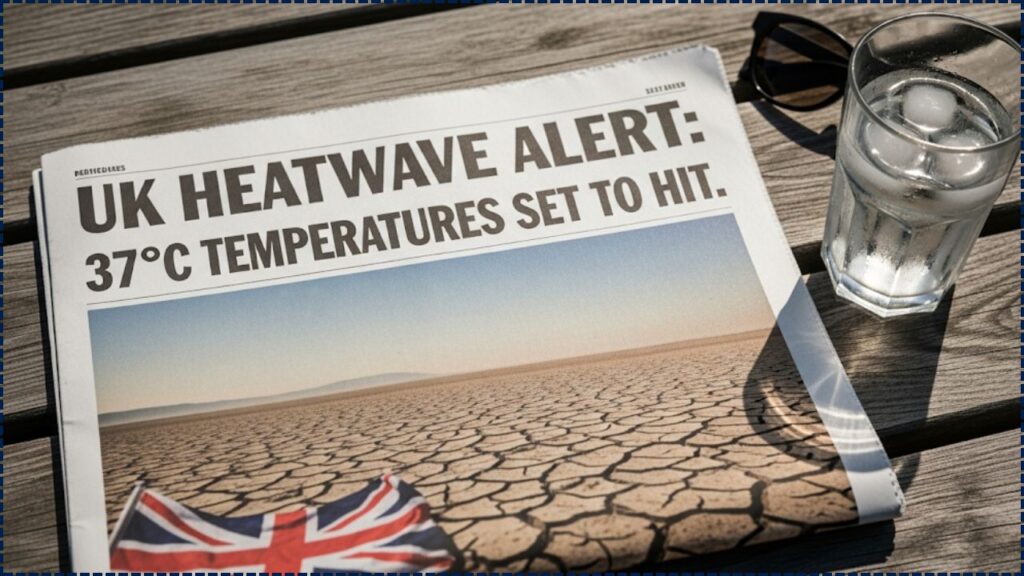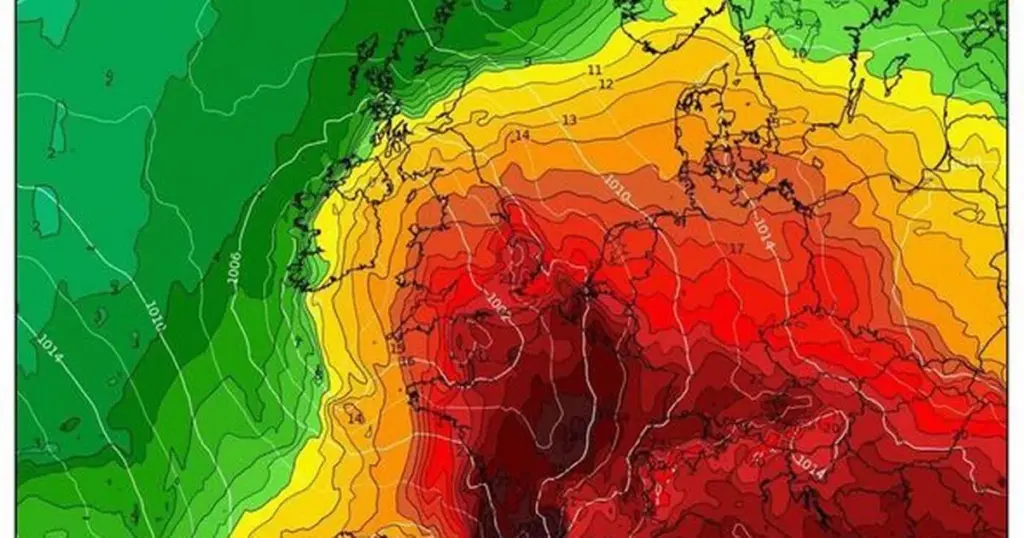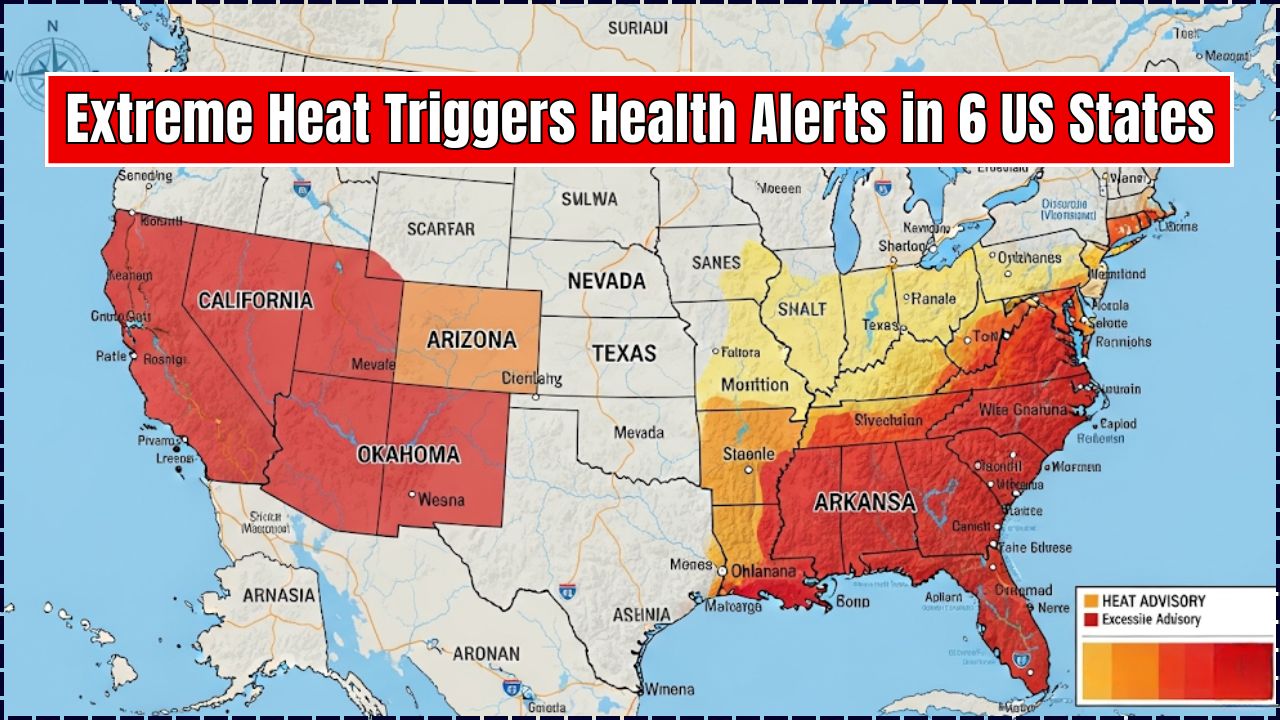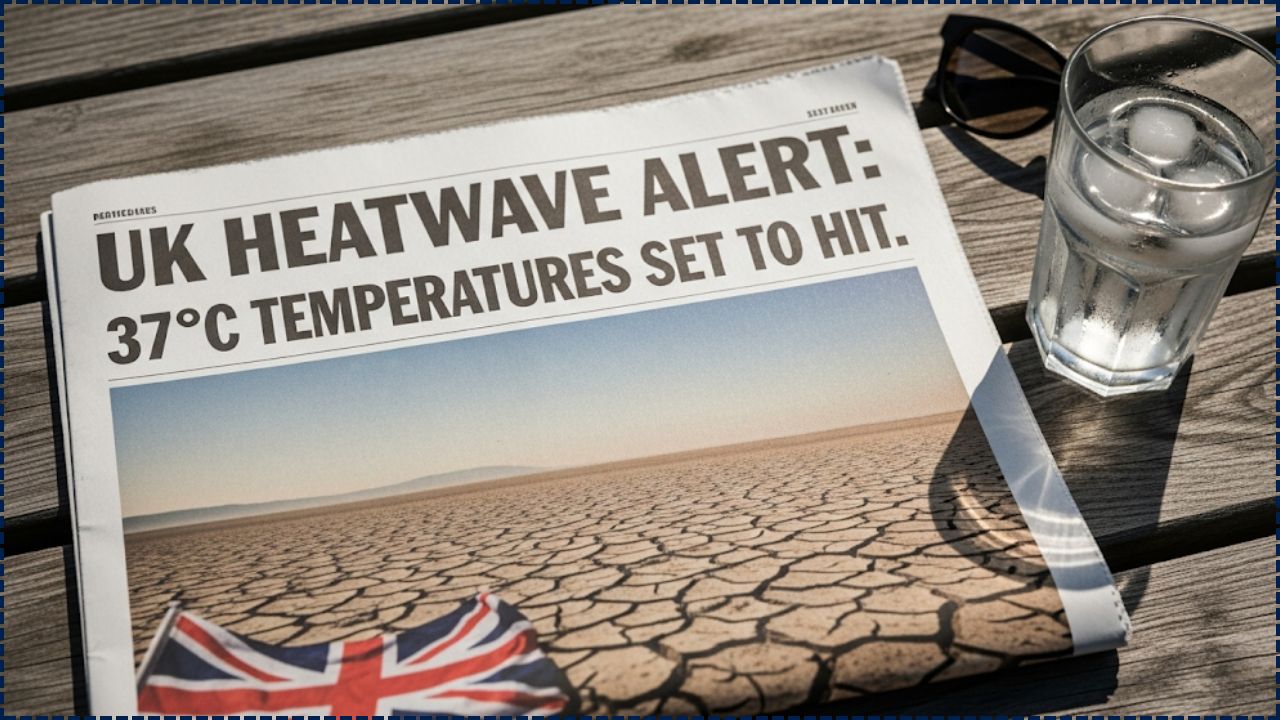As we head into the middle of summer, the UK is preparing for a major heatwave, with temperatures potentially hitting a blistering 37°C in some regions. For many of us, that’s not just uncomfortable—it’s downright dangerous. The UK Health Security Agency (UKHSA) has issued an official heatwave warning, urging residents in affected areas to take immediate steps to stay safe and avoid heat-related illnesses.

In this comprehensive guide, we’ll break down everything you need to know about preparing for the upcoming heatwave, from understanding the science behind it to offering practical advice on staying cool and safe during extreme heat. Whether you’re at home, at work, or out and about, these tips will help you stay one step ahead and protect yourself from the risks of dangerously high temperatures.
UK Heatwave Alert
| Key Information | Details |
|---|---|
| Temperature Predictions | Temperatures could reach as high as 37°C in some areas. |
| Heatwave Duration | The heatwave is expected to last from Friday, August 15 to Monday, August 18, 2025. |
| At-Risk Regions | Key counties at risk include Greater London, West Midlands, and many others. |
| Health Risks | Dehydration, sunstroke, and heat-related illnesses. |
| Precautions | Hydrate, avoid strenuous activities, stay in cool environments. |
| Official Resources | Met Office Heatwave Updates |
Heatwaves can be challenging, especially when temperatures soar past what we’re used to in the UK. However, with proper preparation and awareness, you can stay safe and enjoy the summer heat without risking your health. Remember to stay hydrated, keep cool, and check in on vulnerable individuals.
What Is a Heatwave, and Why Should You Care?
When we talk about heatwaves, we’re not just referring to a day or two of uncomfortably high temperatures. A heatwave is an extended period of excessively hot weather that typically lasts at least three consecutive days. For the UK, this means that temperatures are expected to soar above the usual summer highs, pushing the mercury well above 30°C (86°F). This is a serious concern because such extreme heat isn’t just inconvenient—it can be dangerous, especially for vulnerable individuals.
A heatwave is a product of several weather factors coming together: high pressure systems, little cloud cover, and hot air masses moving across the country. Over time, this creates a “heat dome,” trapping warm air near the surface and preventing it from dissipating.
The real problem is that the UK isn’t built for heatwaves. Most homes and offices are designed for colder weather, meaning that they can become unbearably hot when the temperature spikes. Air conditioning is not as widespread as it is in hotter countries, leaving many people struggling to stay cool.
Why Is This Heatwave Significant?
In the UK, a temperature of 37°C is rare, and this upcoming heatwave could be one of the most intense in recent years. The risk of health complications is higher when temperatures hit extreme levels like this, which is why the UKHSA has issued a Level 3 heat-health alert. This level is issued when the heat poses a serious risk to the health of the general public, especially to those in high-risk categories such as children, the elderly, and individuals with underlying health conditions.
While the current heatwave is not expected to break records, it is significant for its duration and intensity. With such high temperatures lasting several days, the UK is expected to see a spike in emergency hospital visits for heat-related issues like dehydration, heat exhaustion, and heatstroke.
Practical Steps for Dealing with a Heatwave
No one likes to be unprepared, especially when it comes to extreme weather. That’s why it’s so important to plan ahead and understand the steps you can take to keep yourself, your family, and your community safe. Here are some practical and easy-to-follow steps to help you handle the upcoming heatwave.
Step 1: Stay Hydrated – Your Number One Priority
During a heatwave, dehydration is a real threat. When the body loses too much water through sweat, it becomes less efficient at regulating temperature. This can lead to heat exhaustion or, in more severe cases, heatstroke. Make sure to drink plenty of fluids throughout the day, even if you don’t feel thirsty. It’s also helpful to avoid caffeinated and alcoholic drinks, as these can dehydrate you further.
Tip: Carry a reusable water bottle with you at all times. If you’re at home, keep water close by and set a reminder to take a sip every 30 minutes.
Step 2: Keep Cool – Inside and Out
When temperatures rise, staying cool is the name of the game. Inside your home, close blinds or curtains to block out the sun and prevent the heat from entering. Open your windows when the outside temperature cools down, typically in the evening or early morning. If you have access to fans or air conditioning, use them to circulate air and bring the temperature down.
Tip: If you don’t have air conditioning, you can make a makeshift cool-down system. Fill a bowl with ice and place it in front of a fan to create a DIY air conditioner.
Step 3: Avoid Strenuous Activities
It might be tempting to head outdoors and enjoy the sunshine, but it’s essential to avoid exerting yourself during the hottest parts of the day, usually between 11 a.m. and 4 p.m. This is when the sun’s rays are at their strongest and the heat is at its peak.
Tip: If you have to exercise or work outdoors, try to do so early in the morning or late in the evening, when the temperature is cooler.
Step 4: Look After Vulnerable People and Pets
Older adults, children, and people with chronic health conditions are particularly vulnerable to the effects of extreme heat. Be sure to check in on elderly relatives or neighbors and offer them assistance if needed. Similarly, don’t forget about your pets—dogs and cats can suffer from heatstroke too, so make sure they have access to fresh water and shaded areas.
Tip: If you have a pet, avoid walking them during the hottest times of day, and keep them inside with you to help them stay cool.
Step 5: Watch for Heat-Related Illnesses
The two most common heat-related conditions are heat exhaustion and heatstroke. Heat exhaustion occurs when the body becomes too hot and loses too much water and salt. It can lead to dizziness, nausea, and fatigue. Heatstroke is much more serious and happens when the body’s temperature regulation system fails. Symptoms include confusion, rapid pulse, and skin that’s hot to the touch.
Tip: If you or someone around you is showing signs of heat exhaustion, get them to a cool place, hydrate, and rest. For heatstroke, seek medical attention immediately.
Expert Advice: Understanding the Long-Term Impact of Heatwaves
Dr. Emma Lawrence, a climate scientist with the UK Climate Impacts Program, says that heatwaves are becoming more common due to climate change. “As global temperatures continue to rise, extreme weather events like heatwaves are expected to increase in both intensity and frequency. We must adapt our infrastructure to better cope with these changes,” she explains.
Experts agree that cities need to invest in better green spaces—areas filled with trees and plants—to combat the “urban heat island effect.” This is when cities become significantly hotter than rural areas due to the heat-absorbing properties of buildings, concrete, and asphalt.
Tip: If you live in an urban area, consider visiting parks or green spaces, where temperatures can be up to 10°C cooler than in the surrounding areas.

Heatwave Safety for Employers: Protecting Workers During Extreme Heat
Employers have a legal responsibility to ensure the health and safety of their workers. During a heatwave, this means taking extra precautions for those working outdoors or in environments where temperatures are likely to be high.
- Ensure Access to Water: Make sure employees have plenty of water and places to cool off.
- Modify Work Hours: If possible, reduce work hours or reschedule tasks to avoid peak heat.
- Training: Educate workers about the risks of heat-related illnesses and provide proper cooling gear.
FAQ
1. What should I do if I can’t stay indoors during the heatwave?
If you need to be outdoors, stay in the shade as much as possible, wear sunscreen, and drink water regularly. Avoid vigorous physical activities and try to limit your time in direct sunlight.
2. Can I still exercise during a heatwave?
Yes, but it’s important to do so during cooler parts of the day, such as early mornings or late evenings. Drink water and take breaks to avoid overheating.
3. How can I keep my home cool without air conditioning?
Block out the sun by closing curtains and blinds, use fans, and place ice in front of them for a DIY cooling effect. Open windows when it’s cooler outside.












